Introduction to the method of brewing coffee beans in Tanzania description of coffee flavor of Kilimanjaro, Tanzania
African coffee is undoubtedly dominated by Ethiopia and Kenya, these two big African coffee producers, both in terms of quality and quantity, can be well guaranteed. At the same time, coffee from Tanzania, a big country in East Africa, is also gradually coming into people's view.
Tanzanian coffee
Tanzania borders Kenya and started growing coffee at a similar time. In 1898, Catholic missionaries introduced coffee to the Kilimanjaro region of Tanzania, which was the beginning of coffee cultivation in Tanzania.
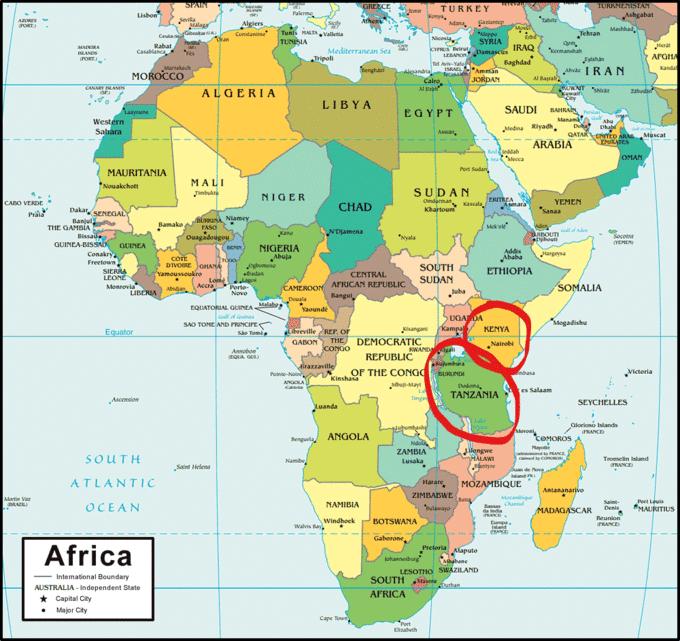
After World War I, Britain won the management of Tanganyika (the predecessor of Tanzania), and both Kenya and Tanzania started the development of coffee cultivation at the same time. But unlike Kenya, Kenya established the Scott Agricultural Laboratory as early as 1922, which began the scientific process of growing coffee. In Tanzania, however, there is still a dispute over whether to grow food crops or cash crops.
It was not until the autonomy of Tanzania in 1961 that the government put coffee as the focus of economic development that Tanzania ushered in its development, but the results did not meet the government's expectations. It was not until the 1990s that the government carried out a series of reforms and regulations on the coffee industry that Tanzanian coffee had a place in the world.
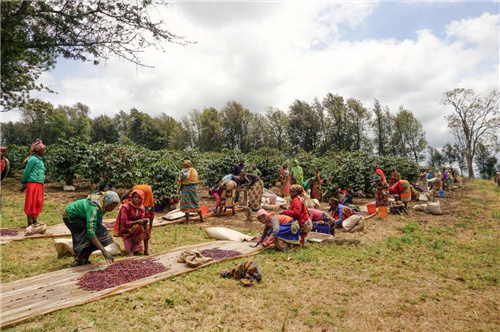
Although Tanzania is far less famous than Kenya, its coffee production is on a par with Kenya.
Tanzania producing area
Tanzania is mainly divided into two producing areas, namely the southern producing area and the Kilimanjaro producing area. The southern producing areas are located in the southern part of Tanzania, and the main producing areas are RUVUMA and MBEYA. Although the current quality is not dominant, it is considered by many international bean hunters to be the coffee producing area with the greatest potential for boutique coffee. With the international attention and investment in recent years, the southern producing area is called the main producing area of Tanzania.
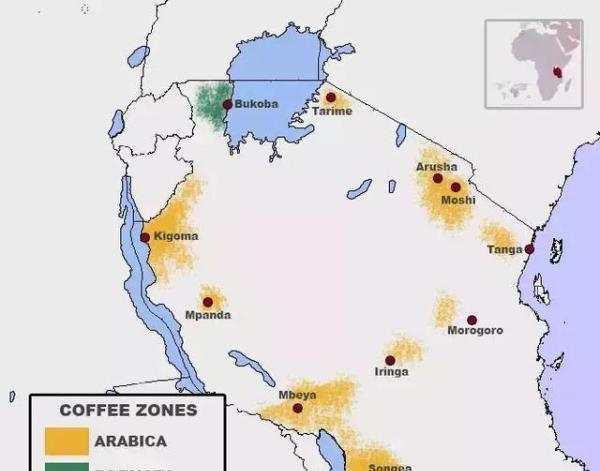
Kilimanjaro production area is located around the Kilimanjaro volcano, near Kenya, is the first coffee growing area in Tanzania. Relying on the advantage of altitude, fertile volcanic soil and pure snow-melting water to become the most suitable area for growing coffee, coffee in Kilimanjaro is often regarded as comparable to Kenyan coffee. Therefore, the Tanzanian coffee selected for Qianjie Coffee comes from the Kilimanjaro producing area.
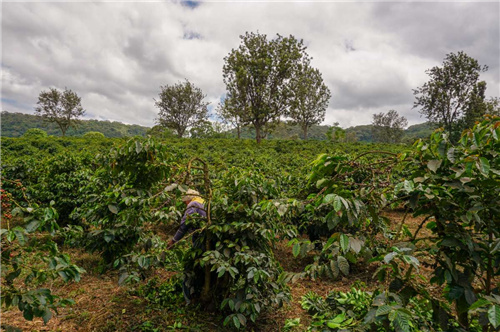
This Tanzanian coffee of Qianjie coffee is a kind of washed tin card, which is recognized as a variety of coffee of good quality. The coffee bean grading system adopted in Tanzania is similar to that of Kenya, taking the size of coffee beans as the standard, while the Tanzanian coffee in Qianjie belongs to the AA grade, that is, 90% of the size is more than 18 mesh, so the appearance of coffee beans is large, plump and uniform.
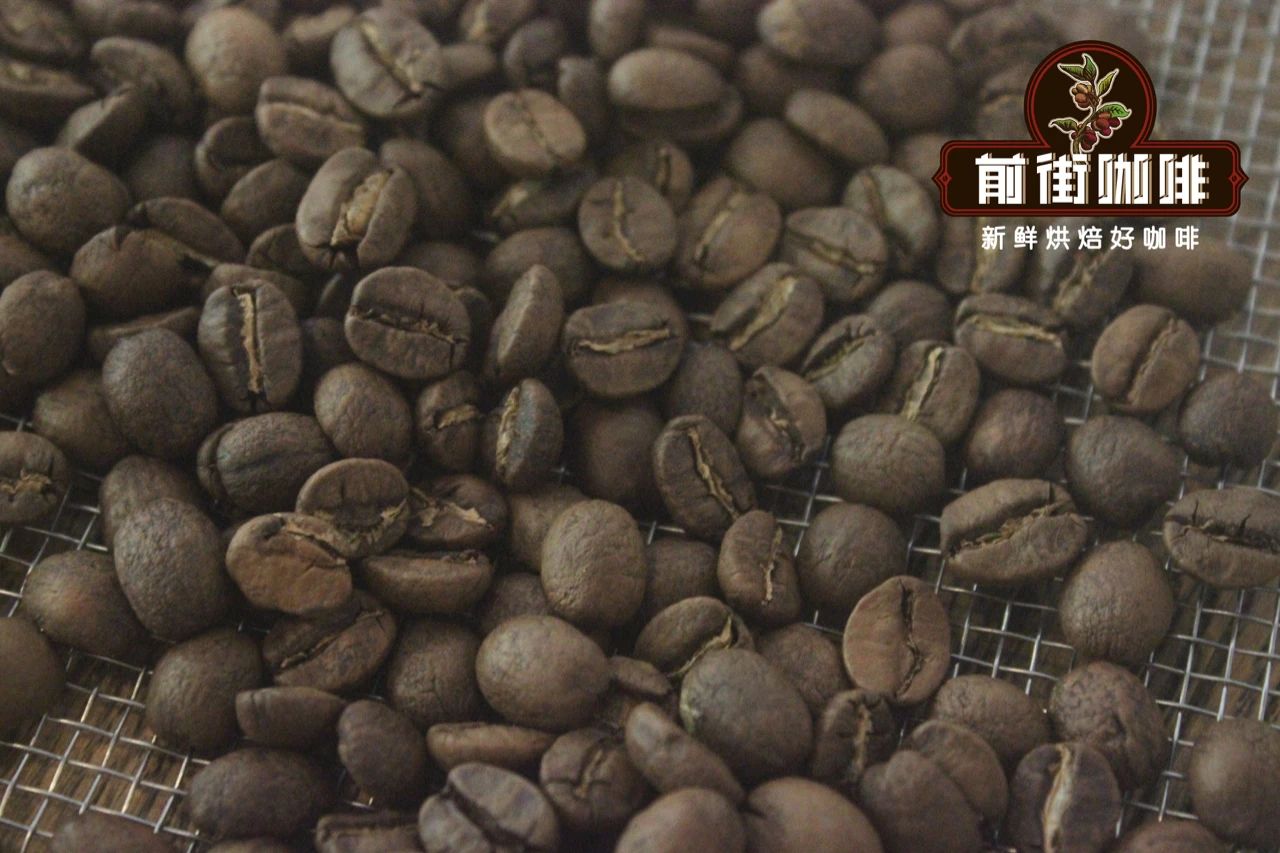
In the aspect of baking, because the moisture content of beans is relatively high and the coffee particles are large, the dehydration time is prolonged during baking so that the bean surface and bean core are heated evenly. In order to show the sweetness, acidity and flower and fruit aroma of this bean, we used medium-light baking to prolong its caramelization reaction after an explosion to make the sweetness more obvious. The color value of bean surface is 74.9 and that of bean core is 83.8.
How to brew Tanzanian coffee
Qianjie tested the flavor of this bean in the cup with citrus, berries, honey and tea. In order to show the sweet and sour balance and comfortable entrance of this coffee, Qianjie brewing scheme adopts the following brewing parameters:
Amount of powder: 15g
Powder / water ratio: 1:15
Grinding degree: EK-43S scale # 10 (20 standard screen pass rate 80%)
Water temperature: 90 degrees Celsius
Filter cup: V60
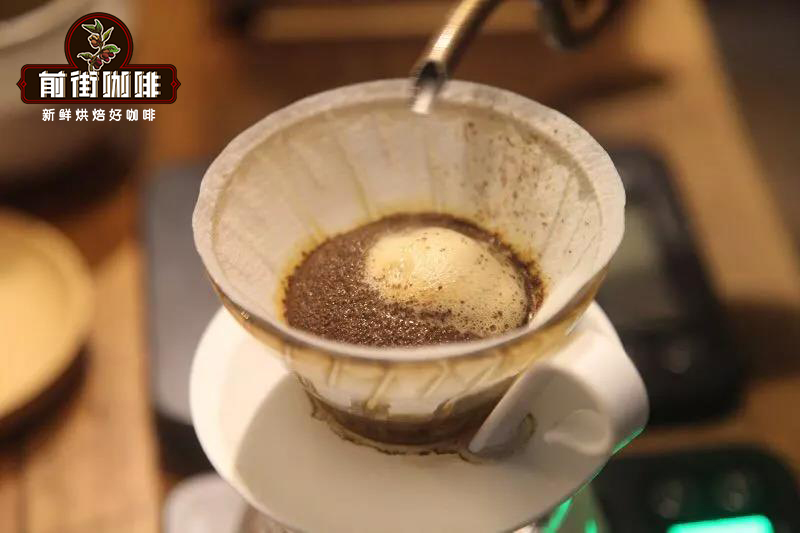
First, 30 grams of water is injected into the steam for 30 seconds, and 120 grams of water is injected around the concentric circle in the second stage, reaching 150 grams of water injection. When the liquid level drops to almost expose the powder bed, 90 grams of water is injected, up to 240 grams of water injection. Wait for the coffee liquid to flow into the next pot and finish the extraction for 2 minutes. In this way, the cooking flavor highlights the flavor of citrus and honey, and the taste is moderate.
Important Notice :
前街咖啡 FrontStreet Coffee has moved to new addredd:
FrontStreet Coffee Address: 315,Donghua East Road,GuangZhou
Tel:020 38364473
- Prev
How to brew coffee by hand for 4 people? How many grams of coffee powder do you need for 4 people?
Is brewing coffee for 1-2 people the same as coffee for 3-4 people? In fact, if you actually operate once, you will find that the brewing process is a little different, and the final flavor will be a little different, so how to fine-tune the parameters to stabilize the flavor of coffee. What is the difference between the large amount of powder and the usual cooking? The increase in the amount of powder means that the total amount of water injection also increases, for example
- Next

How to use milk foam to pull flowers? What details should you pay attention to to get rid of foam? Latte Milk foam course
Before, Qianjie shared an article about how to play foam, but there are still some friends who are puzzled. As the so-called details determine success or failure, this barista will take an inventory of the details that should be paid attention to in the process of passing away the foam. Detail 1: the milk used in the front street of frozen milk is pasteurized fresh milk, so it needs to be stored at a low temperature. If you are using room temperature storage
Related
- Beginners will see the "Coffee pull flower" guide!
- What is the difference between ice blog purified milk and ordinary milk coffee?
- Why is the Philippines the largest producer of crops in Liberia?
- For coffee extraction, should the fine powder be retained?
- How does extracted espresso fill pressed powder? How much strength does it take to press the powder?
- How to make jasmine cold extract coffee? Is the jasmine + latte good?
- Will this little toy really make the coffee taste better? How does Lily Drip affect coffee extraction?
- Will the action of slapping the filter cup also affect coffee extraction?
- What's the difference between powder-to-water ratio and powder-to-liquid ratio?
- What is the Ethiopian local species? What does it have to do with Heirloom native species?

